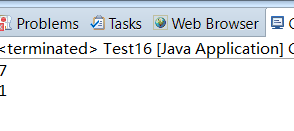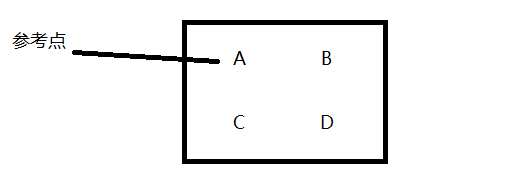算法总结之 将正方形矩阵顺时针转动90度
给定一个 N * N的矩阵,把这个矩阵调整成顺时针转动90度后的形式
要求额外空间复杂度为O(1)
这里仍然使用分圈处理方式
如果你愿意一层一层一层的拨开我的心~ 哈哈哈
由外到内的旋转
上代码一目了然:
package TT; public class Test16 { public static void rotate(int[][] matrix){ int tR = 0; int tC = 0; int dR = matrix.length-1; int dC = matrix[0].length-1; while(tR<dR){ rotateEdge(matrix, tR++, tC++, dR--, dC--); } } public static void rotateEdge(int[][] m ,int tR, int tC, int dR, int dC){ int times = dC-tC; int tmp = 0; for(int i =0; i!=times; i++){ tmp=m[tR][tC+i]; m[tR][tC+i]=m[dR-i][tC]; m[dR-i][tC] = m[tR+i][dC]; m[tR+i][dC] = tmp; } } public static void main(String[] args){ int[][] m = new int[3][3]; m[0][0]=1; m[0][1]=2;m[0][2]=3; m[1][0]=4; m[1][1]=5;m[1][2]=6; m[2][0]=7;m[2][1]=8;m[2][2]=9; rotate(m); System.out.println(m[0][0]); System.out.println(m[0][2]); } }
随便抽查了几个数:

正方形的好做很多,正方形的题目比矩形的考虑维度少了一个,就是一行和一列时候的问题
public class Test6 { public static int[][] revolveRetangle(int[][] arr) { int col = 0; int row = 0; int endCol = arr[0].length - 1; int endRow = arr.length - 1; while (row != endRow && col != endCol) { // 控制最外层 到层的走势 arr = alterPosition(arr, row, endRow, col, endCol); row++; col++; endRow--; endCol--; } return arr; } // 出来一层 参考系是 天花板那个边上的点 public static int[][] alterPosition(int[][] arr, int row, int rowEnd, int col, int colEnd) { int offset = 0; //定位到要移动的那个元素 int movPositionLen = rowEnd; //移动多少距离 距离是慢慢缩小的(与具体旋转时候坐标位置相关) while (offset<rowEnd) { //正方形 移动的每个边长的移动寿命都是一样的 没有特殊情况 //每一次循环 控制的是每一个边上面 点 的移动 int temp = arr[row+offset][col]; arr[row+offset][col]=arr[row][col+movPositionLen-offset]; //offset控制的是AD边的移动 (col-offset)是个整体 arr[row][col+movPositionLen-offset]=arr[row+movPositionLen-offset][col+movPositionLen]; arr[row+movPositionLen-offset][col+movPositionLen]= arr[row+movPositionLen][col+offset]; arr[row+movPositionLen][col+offset]=temp; offset++; } return arr; } public static void main(String[] args) { int[][] arr = new int[3][3]; arr[0][0] = 1; arr[1][0] = 2; arr[2][0] = 3; arr[0][1] = 4; arr[1][1] = 5; arr[2][1] = 6; arr[0][2] = 7; arr[1][2] = 8; arr[2][2] = 9; int[][] result = revolveRetangle(arr); for (int i=0; i<result.length; i++){ for (int j=0; j<result[i].length; j++){ System.out.print(result[i][j]+","); } } } }
我解释下吧,这样小伙伴们容易理解
画个图:

由于是顺时针移动 每个点的移动范围是有限制的 而且都是一个坐标不变 改变另一个坐标 offset记录的是每一次移动的点滴 移动后就是另一帮点 在做交换了
并且 当用A的位置作为参考系时候 它交给了temp
谁来取代他 然后反推就可以知道了 反推出那个坐标 所以设置了个movPositionLen 变量 因为每次反推时候 是需要有变化的
小伙伴们 懂我的意思了吗?如果你们有更好的思路私信我哈~




